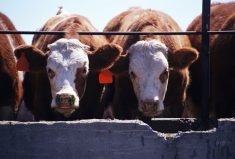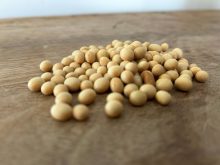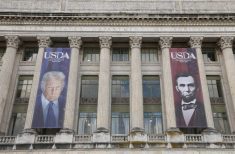Chicago | Reuters — The number of cattle placed in U.S. feedlots last month was higher than expected due to an increase in the number of cattle that had grazed on pastures over the past few months, a government report showed on Friday.
Cattle that had been fattened outside of feedlots for five consecutive months finally came to market at heavier weight, analysts said.
Initially, analysts had predicted that in March fewer cattle entered feedlots, whose margins were worn down by pricey calves that are fattened for sale to packers.
Read Also

U.S. livestock: Cattle futures end higher on cold weather, rising cash prices
Chicago | Reuters – Chicago Mercantile Exchange (CME) cattle futures closed higher on Thursday for the third straight session, as…
Ranchers were also thought to have held back more heifers to rebuild the U.S. herd, now at its third-lowest level since 1952 following years of drought.
The U.S. Department of Agriculture report showed March placements at 1.809 million head, which nearly matched last year’s 1.801 million figure.
Analysts, on average, had expected a placement reduction of 5.5 per cent in March.
USDA put the feedlot cattle supply as of April 1 at 10.797 million head, close to 10.792 million a year ago. Analysts, on average, had forecast an 1.4 per cent decline.
The government said the number of cattle sold to packers, or marketings, was down two per cent in March from a year ago, at 1.631 million head.
Analysts projected a drop of 1.8 per cent from 1.66 million last year due to one additional weekday to market cattle than in the year-ago month.
The higher placement, supply and marketings suggest more cattle were placed than analysts expected, said University of Missouri economist Ron Plain.
March placements were driven by heavyweight cattle, which will come to slaughter sooner than lightweight animals, he said.
“Even though feedlot margins were not good, there were a lot of big cattle that needed to come off grass and go into feedlots,” said Plain. The bump in feedlot supplies reflected those larger placements.
John Ginzel, an analyst with Chicago-based Linn Group, said the bulge in inventory was most noticeable in Idaho and Washington. Those states, he said, have ample vegetable by-products for use in cattle feeding that help offset the cost of feed grain.
Analysts expect Chicago Mercantile Exchange live cattle futures to open lower Monday based on Friday’s report, which could neutralize futures’ sharp rally prior to the data’s release.
“We had a good day on cattle (futures) Friday and the week, but the report should take some of the wind out of the sails for sure,” said Plain.
— Theopolis Waters reports on livestock markets for Reuters from Chicago.















